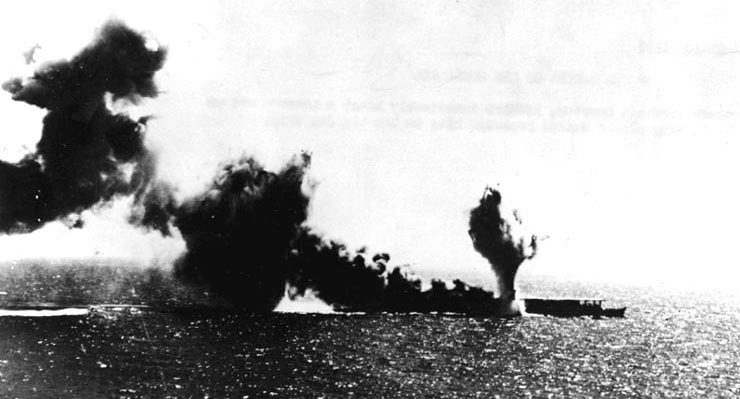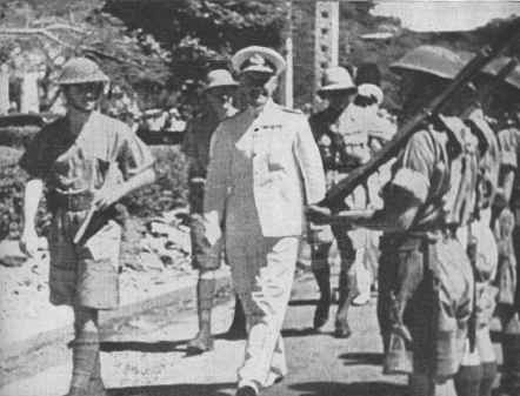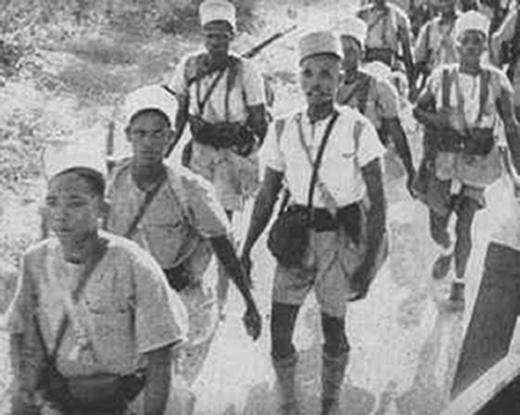Air Operations, Europe
BOMBER COMMAND- 12 Bostons are sent to bomb the Ostend power station and the Zeebrugge coke ovens. Direct hits are recorded at Zeebrugge and near misses at Ostend. There are no aircraft losses.
- In another large mine-laying operation, 81 aicraft are involved near Copenhagen, the Great Belt, Kiel and Heligoland. 1 Hampden and 1 Wellington are lost in these operations.
- In minor operations, 5 aircraft are sent to St Nazaire and 1 Halifax on a leaflet flight over France. There are no losses.
Air Operations, New Guinea
An 8th Pursuit Group P-39 shoots down an A6M Zero over Port Moresby at 1230 hours.
[Battle of the Atlantic
U-136 shells and sinks the Canadian merchant ship Mildred Pauline in the North Atlantic.
[Battle of the Coral Sea
Battle of the Coral Sea
Fletcher sends Task Force 44 under Rear-Adm John G. Craceto attack the Japanese transports bound for Port Moresby. The Japanese sight these ships and unsuccessfully launch heavy attacks on them with land-based aircraft. The US destroyer Farragut (DD-348 is damaged by friendly fire while engaged in repelling the air attack. The Japanese also sight the American tanker the Neosho (AO-23) and the destroyer USS Sims (DD-409). They are attacked and sunk but the Neosho has been mistaken for a carrier.
The Americans also record a success, locating Rear-Adm Goto's covering force and sinking the small carrier Shoho. An attempt by Takagi late in the day to locate and attack the American carriers is a failure, with 21 aircraft lost for no result. A small group is sufficiently confused and attempt to land on the Yorktown.
Japanese Carrier Shoho Is Torpedoed |
 |
The Japanese transports turn back to Rabaul to await the outcome of the carrier action.
[Black Sea
Beginning this day and going to July 2, 24 Russian submarines carry out 77 supply missions to Sevastopol and to evacuate some of the wounded. 4 submarines are lost during this tims.
[Britain, Home Front
Churchill tells Parliament that Diego Suarez on Madagascar has surrendered to British forces and ships of the Royal Navy are entering the harbor. He regrets the need to fight French troops, who, he says, fights with gallantry. He says, 'We trust that the French nation in time will come to regard this episode as a recognizable step in the liberation of their country, including Alsace-Lorraine, from the German yoke.'
[Diplomatic Relations
The Peruvian Trade Agreement is made between the United States and Peru. Pres Manuel Prado visits Washington and expresses whole-hearted support for Roosevelt's policies and profound admiration for the heroic efforts of the British people.
[Germany, Home Front
Albert Speer forms the State Armaments Council, the Rüstungsrat. Included in the council are Erhard Milch, 3 generals and 8 representative of the armaments industry.
[Indian Ocean
2 Vichy submarines, the Le Heros and the Monge are sunk off Diego Suarez.
[Madagascar
Vichy commanders at Diego Suarez surrender to Rear-Adm Neville Syfret and Maj-Gen Robert C. Sturges.
|
|
Malta
Spitfire reinforcements are flown into the island from the carriers Wasp and Eagle.
[Philippines
Gen Wainwright, in Japanese custody, broadcasts from Luzon to announce the surrender of Corregidor and invites the remaining US forces in the Philippines to do likewise. Despite the US losses the campaign has not been an unqualified failure. Gen Masaharu Homma was initially allocated 50 days to complete the campaign, but his crack troops have in fact been campaigning now for 5 months when they might have been employed elsewhere. One feature of the struggle has been the loyalty of the Filipinos. This has been contrary to Japanese expectations and contrasts significantly with some of the British Burmese Regts.
MINDANAOThe Japanese break off ground action but continue air and artillery activity.
[
